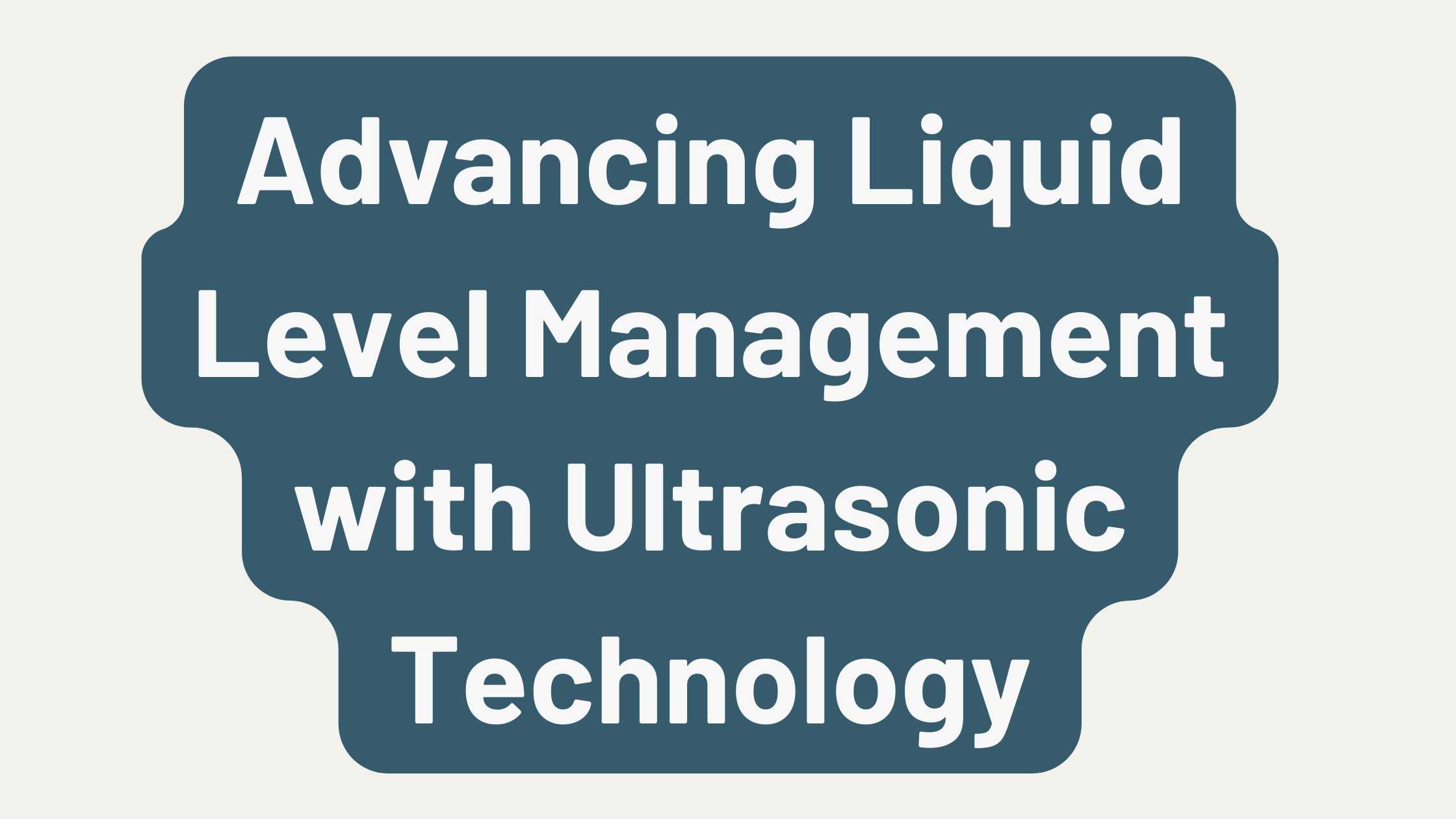
Advancing Liquid Level Management with Ultrasonic Technology
Managing liquid levels efficiently and accurately is a crucial task in the rapidly evolving field of industrial automation. Ultrasonic technology, particularly with devices like Maxbotix ultrasonic sensors, has emerged as a leading solution, transforming how industries measure and control liquid levels. This comprehensive article delves deeper into the workings, advantages, applications, integration with automation systems, challenges, and prospects of ultrasonic technology in liquid-level management.
Principles of Ultrasonic Liquid Level Measurement
Ultrasonic liquid level measurement operates on the principle of sound wave reflection. An ultrasonic sensor mounted at the top of a tank emits sound waves downwards. These waves travel through the air and reflect off the liquid surface to the detector. The sensor then calculates the interval between sending the wave and receiving the echo. This duration calculates the distance to the liquid surface, accurately measuring the liquid level. This method or way is highly effective due to its precision and ability to function without direct contact with the liquid.
Benefits of Ultrasonic Technology in Level Management
The benefits of ultrasonic sensors in liquid level management are substantial:
- Non-Contact Nature: Their ability to measure without touching the liquid is ideal for handling corrosive, hot, or hazardous fluids, reducing the risk of contamination and equipment damage.
- High Accuracy and Reliability: Ultrasonic sensors provide precise measurements, crucial in industries where exact liquid levels are critical for quality control and process efficiency.
- Adaptability: These sensors are suitable for various liquids and can operate in multiple tank shapes and sizes, making them versatile for different industrial needs.
Applications of Ultrasonic Sensors in Industry
Ultrasonic sensors find applications across multiple industries due to their versatility and accuracy:
- Water and Wastewater Management: They are used in water treatment plants for reservoir level monitoring and controlling water distribution systems.
- Chemical Manufacturing: In the chemical industry, ultrasonic sensors safely measure hazardous chemical levels, ensuring worker safety and process control.
- Food and Beverage Production: These sensors monitor the levels of liquids like oils, milk, and beverages, ensuring consistency in production and packaging.
- Petroleum Industry: Ultrasonic sensors are crucial in monitoring fuel levels in storage tanks, aiding in inventory management and leak detection.
Integration with Automation Systems
The integration of ultrasonic sensors with industrial automation systems enhances process efficiency and accuracy:
- Real-Time Monitoring: Connected to control systems, these sensors provide real-time data on liquid levels, enabling immediate process adjustments.
- Automated Control: Integration with mechanical systems allows for the automatic opening or closing of valves and activation of pumps based on the liquid level, optimizing operations.
- Data Analysis: The data can be analyzed for trends and used to predict maintenance needs, improving operational planning and reducing downtime.
Challenges in Ultrasonic Level Measurement
Despite their many advantages, ultrasonic sensors face several challenges:
- Environmental Influence: Accuracy can be affected by environmental conditions like temperature fluctuations, humidity, and air turbulence.
- Obstructions and Tank Geometry: Physical obstructions within tanks and complex geometrical shapes can lead to erroneous readings due to multiple echoes.
- Material Properties: Certain liquid properties, such as high vapor pressure or surface turbulence, can hinder accurate measurements.
The Future of Ultrasonic Technology in Level Management
The future of ultrasonic technology in liquid-level management is geared towards overcoming current limitations and expanding capabilities:
- Advanced Signal Processing: Development in signal processing techniques will help mitigate the effects of environmental variables and obstructions.
- Integration with Emerging Technologies: Incorporating IoT and AI can lead to smarter, more autonomous systems capable of predictive maintenance and enhanced decision-making.
- Broader Material Compatibility: Research is ongoing to make ultrasonic sensors effective with a more comprehensive range of materials, including those with challenging properties.
Enhanced Safety and Environmental Compliance:
Ultrasonic sensors significantly contribute to workplace safety and environmental protection. By offering a non-intrusive measurement method, these sensors eliminate the need for personnel to interact with potentially dangerous or toxic liquids physically. This lowers the risk of accidents and exposure to harmful substances. Moreover, in industries where environmental regulations are stringent, such as oil and gas or chemicals, the precision of ultrasonic sensors aids in preventing overfills and spills, thus ensuring compliance with environmental standards. Their role in facilitating safe and eco-friendly practices cannot be overstated, as they help industries avoid costly fines and protect the ecosystem.
Cost-Effectiveness and Maintenance Ease:
While the upfront cost of ultrasonic sensors might be higher than traditional methods, their long-term cost-effectiveness is a significant advantage. Due to their non-contact nature, these sensors undergo less wear and tear, leading to longer lifespans and reduced need for replacements. Moreover, the lack of direct contact with liquids means less maintenance is required to clean or repair the sensors, which can be costly and time-consuming in other measurement technologies. The ease of installation and ease og maintenance requirements make ultrasonic sensors a financially sound choice for continuous and long-term industrial operations, ensuring that companies can use resources in other critical areas of their business.
Conclusion
In conclusion, ultrasonic technology, mainly through devices like Maxbotix ultrasonic sensors, significantly advances liquid-level management across various industries. With their ability to provide accurate, non-invasive, and versatile measurements, ultrasonic sensors have become indispensable in modern industrial operations. Despite facing specific challenges, the ongoing technological advancements and integration with cutting-edge technologies promise to enhance their capabilities further, solidifying their role as a key component in the future of industrial automation and control.






